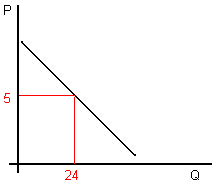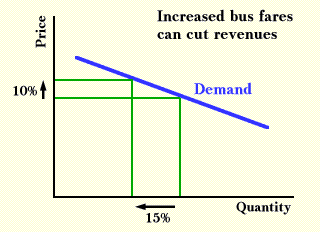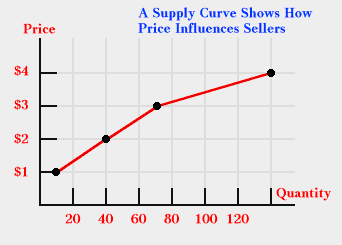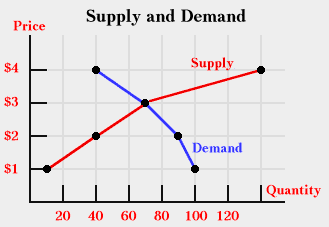
Further Remarks
Big Ideas in the Principles of Microeconomics

Why does California experience chronic water shortages? Why does the European Common Market have in its warehouses a mountain of butter and lake of wine?
 |
 |
 |
 |
A few brief observations:
1. It is important to distinguish between wants and needs.
2. Utility is a concept used to represent the satisfaction that people derive
from their consumption activities.
3. People try to allocate their incomes so as to maximize their utility.
4. Although total utility may increase with the amount consumed, the incremental
increase in total utility (marginal utility) declines.
 |
 |
The Rational Spending Rule: Spending should be allocated across goods so that the marginal utility per dollar is the same for each good. The ratio of marginal utility to price should be the same for all goods.

The Law of Demand: People do less of what they want to do as the cost of doing it rises. Not everyone has the same reservation price.
Additional observations:
1. Extra income stimulates demand by enlarging the set of affordable
combinations - by making it possible to buy more of each good than before.
2. When the price of a substitute or complement changes then the consumer must
re-examine her purchases in order to restore the balance in the rational
spending rule.


Price Elasticity of
Demand
Definition
Ranges
Elasticity and Total Expenditures
Determinants of Price Elasticity of Demand
substitution
possibilities
budget
share
time
Calculating price elasticity of demand
(change
in Q/Q)/ (change in P/P)
(P/Q)
(1/slope)
Changing
price elasticity of demand along a straight line demand curve
Income elasticity and cross price elasticity
Special cases
perfectly
elastic
perfectly
inelastic
graphs

The Law of
Supply: Supply curves are essentially an application of the law of increasing
costs that we saw in the earlier
remarks. Producers offer more of a product for sale when its price rises.
Not every seller has the same reservation price.
Determinants of Supply
Technology
Input Prices
Number of Suppliers
Expectations
Elasticity of Supply
Flexibility of inputs
Mobility of inputs
Ability to produce substitute inputs
Time

Market Equilibrium and Efficiency: If price and quantity take anything other than their equilibrium values, a transaction that will make at least some people better off without harming others can always be found.
Economic Surplus
Consumer Surplus - The cumulative difference between what you
were willing to pay and what you had to pay.
Producer Surplus - The cumulative difference between what you
were willing to accept and what you actually recieved for goods sold.
Deadweight loss - The loss in economic surplus resulting from
interference with the market.
Price floors, price ceilings, taxes
To use some of these ideas let's work a few problems.
 |
2. Suppose the weekly demand for soft pretzels in Philadelphia is given by the equation P = 12 - 0.25Q, and the weekly supply of soft pretzels is given by the equation P = 6 + 0.75Q, where P is the dollar price of one dozen pretzels and Q is dozens of pretzels. |
| a. What is the equilibrium price? b. What is the equilibrium quantity? c. What is consumer surplus? d. What is producer surplus? e. The local government is persuaded to impose a price ceiling of $7.50. What shortage of pretzels will result from this policy? f. What will be the total economic surplus lost due to the price ceiling policy? g. The local government abandons the price ceiling and a week later imposes a tax of $0.50 per dozen pretzels on sellers. What will be the total price per dozen paid by consumers? h. What will be the net price received by sellers? i. How much tax revenue is collected by the local government? j. What will be the deadweight loss attributable to the imposition of the tax? |
|
 |
Try this problem set on trade, tarifs and quotas in the TV market from Econ 1102 to see if you can work with the ideas presented here. |